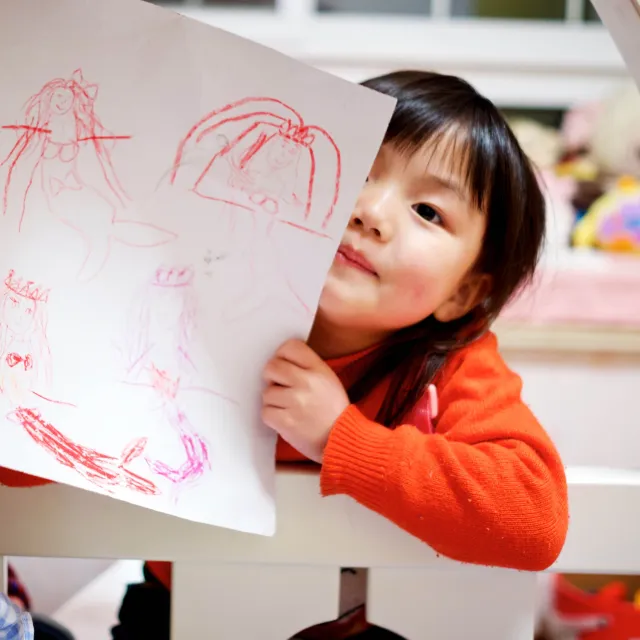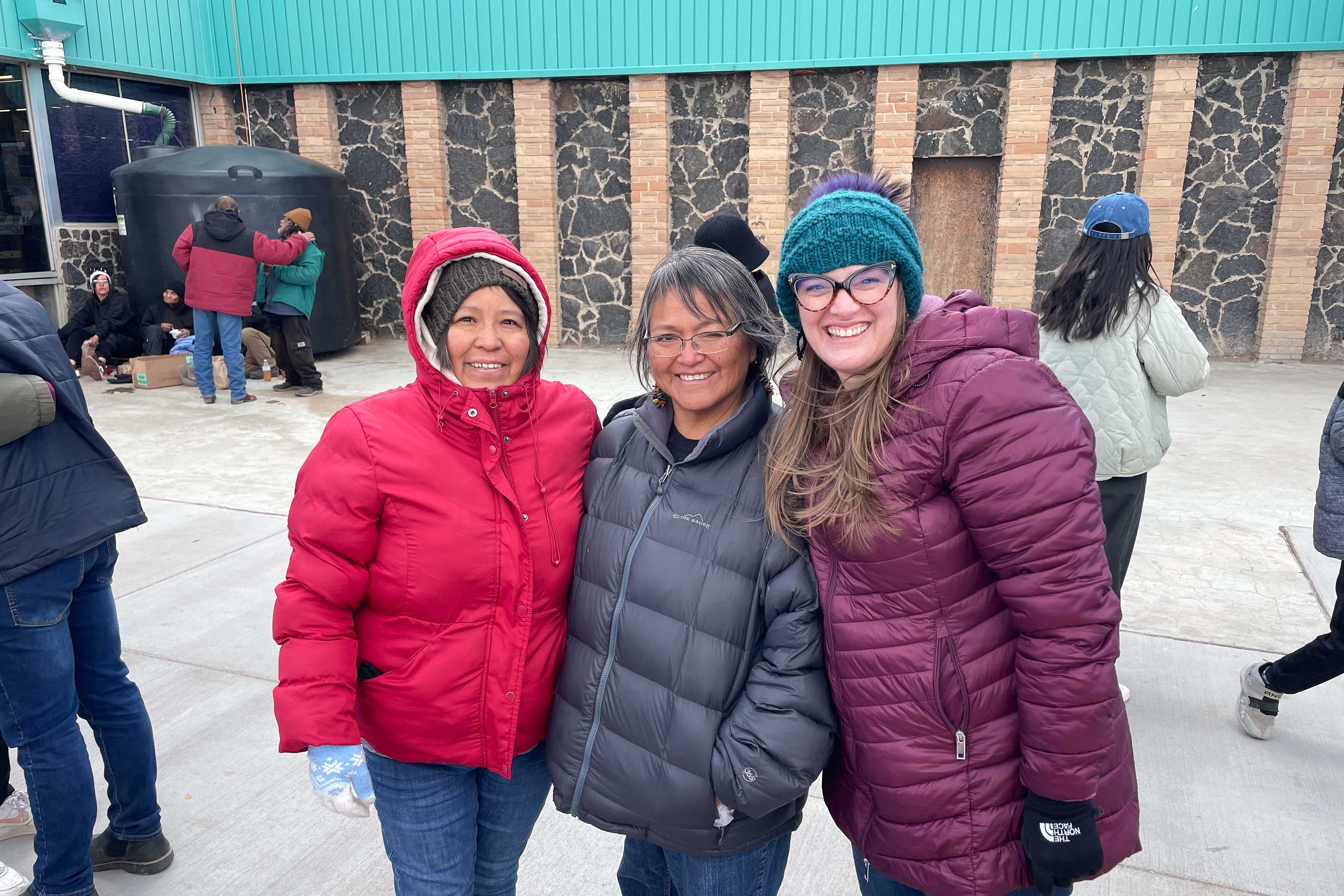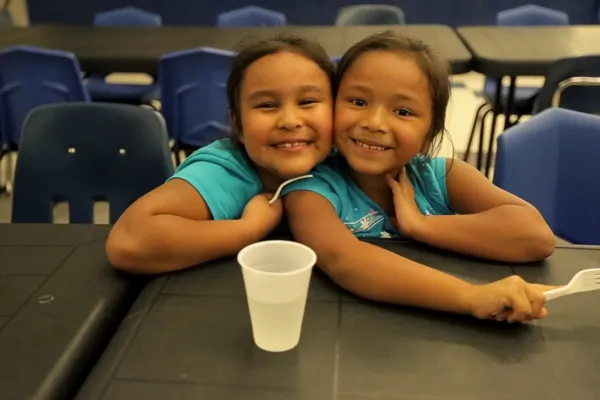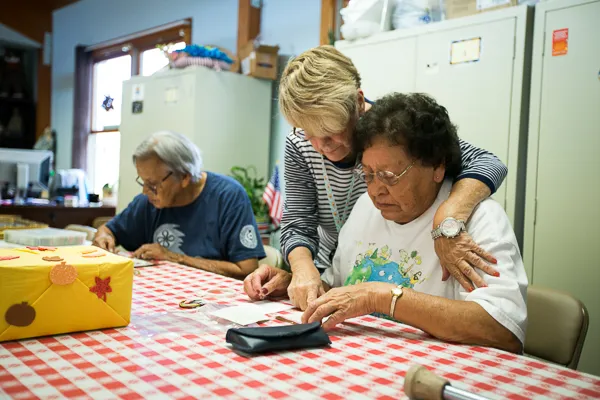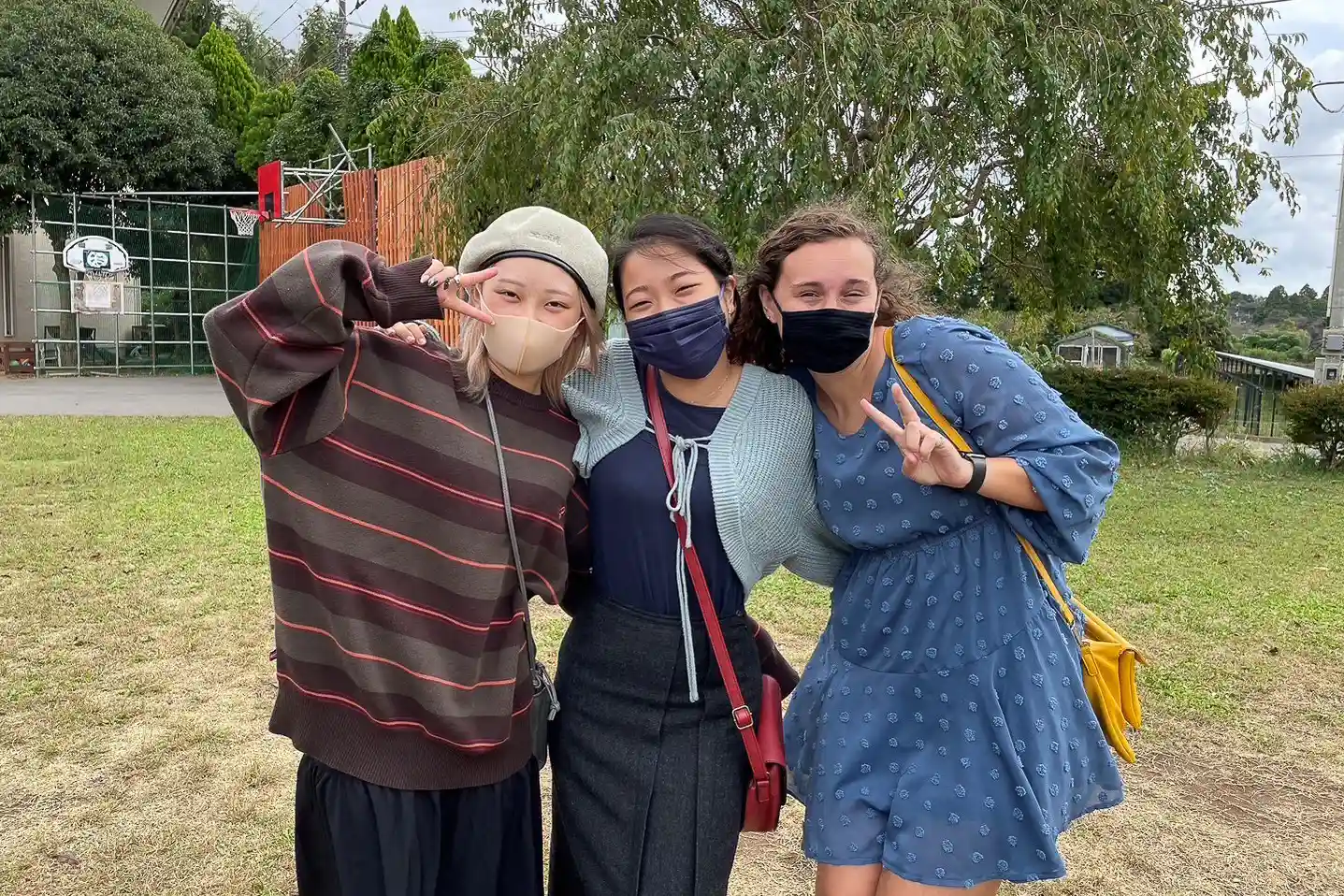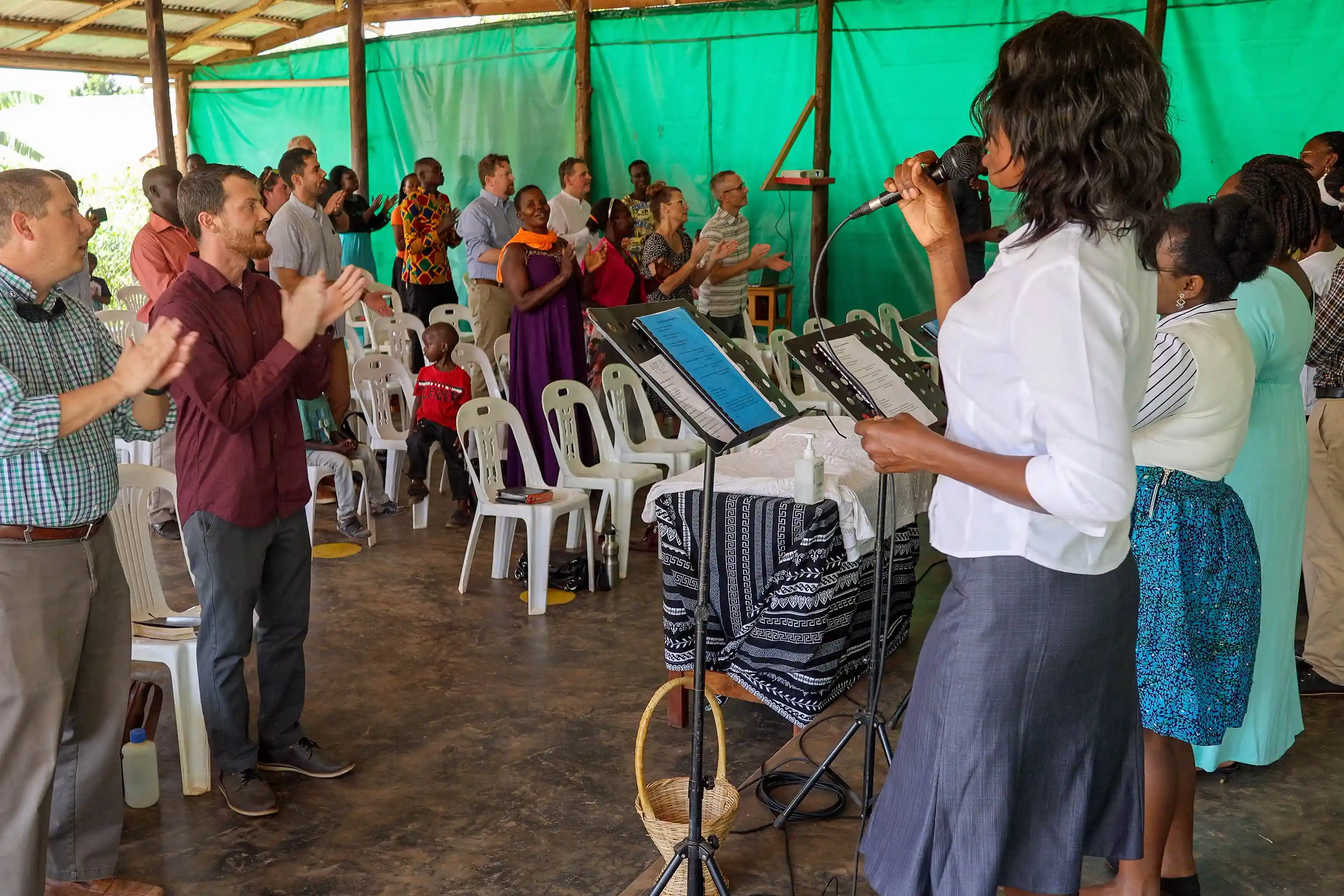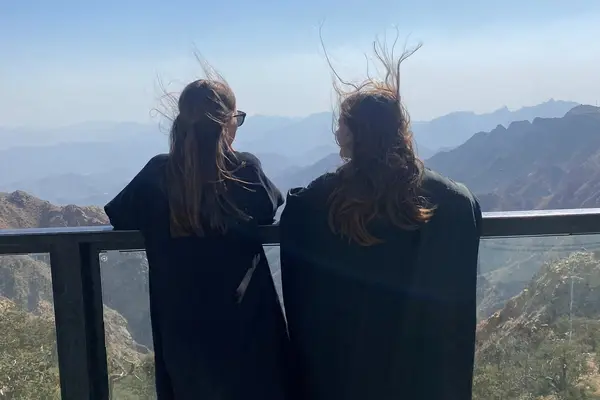The Navajo Church
Walking Tall in the Way of Christ

Mary Worker remembers inviting people from her church in Flagstaff, Arizona, to visit her Native community and cook a traditional meal. “And this woman was so excited to accept,” the 72-year-old Navajo says.
“I thought, ‘Why is this non-Native so interested in butchering a sheep and preparing a meal?’ From that moment I knew I could have a friendship with this sweet lady.”
That sweet lady is MTW missionary Emily Henry. 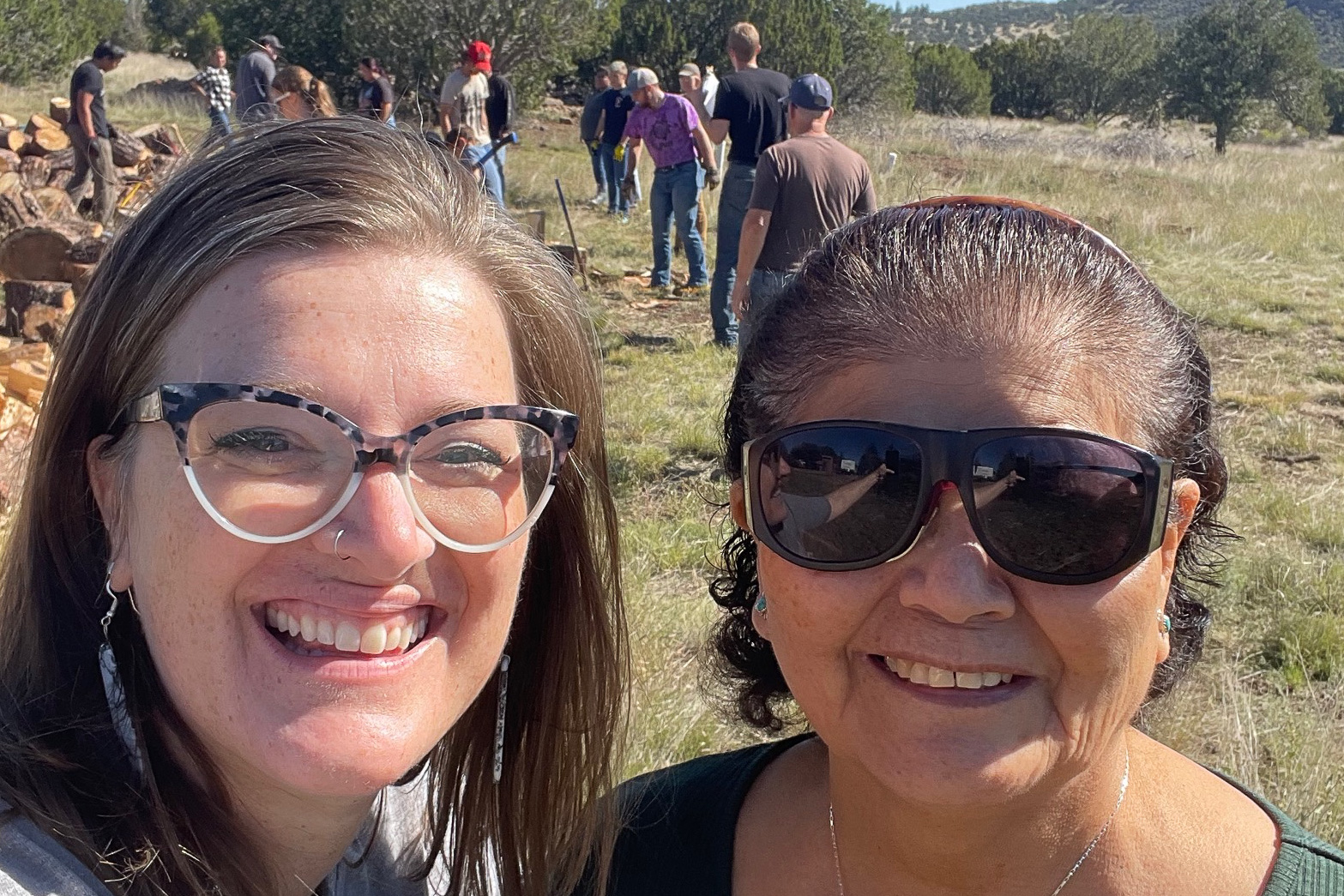
For almost 10 years, Emily and her husband, DH, have served the Navajo people in northern Arizona. After DH and Emily graduated from seminary in 2008 and 2011 respectively, they began to feel pulled to the beautiful, troubled Navajo nation. In 2015 they settled in the dry hills of Window Rock, Arizona, for language and culture learning.
For DH, it was continuing a family ministry. His grandfather spent 20 years pastoring on an Oklahoma reservation, and his father grew up as a third-culture kid.
Much of the ministry is the same as in his grandfather’s time, DH says. Reservations are rugged and resilient places with thick cords of poverty and spiritual darkness. Co-workers have had bodies of sacrificed animals left on the porch of the church as part of rituals against them. “Medicine men pray against the Christian church because it represents competition and challenges the strongest vestige of native culture.”

Medicine men pray against the Christian church because it represents competition and challenges the strongest vestige of native culture.”
And two generations later, it is a seemingly unaltered story of trauma, addiction, crime, and abuse.
The Henrys jumped in.
But as they served in mercy ministry and outreach, the Lord began to shift their calling. Encouraged by Navajo and Anglo ministry partners, they are now mentoring future Indigenous leaders to plant churches.
“There are dozens, maybe hundreds of churches in the Navajo nation. We weren’t planning on planting one more,” DH says with a laugh.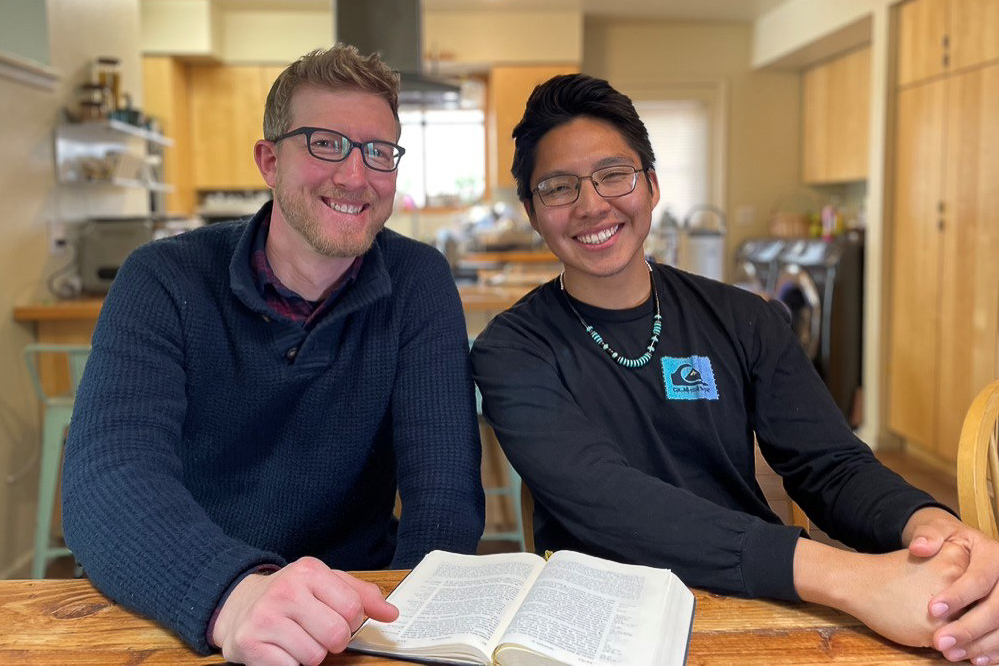
A Church Worth Fighting For
For all the rhetoric that First Nations are much-reached (people joke about “white van season” when short-term church trips show up loaded with supplies) and mis-reached (where the gospel is brought with force and dominance), they are not unreached. More than half of Natives identify themselves as Christians.
But the number of churches doesn’t tell the whole story. DH and Emily watched, increasingly burdened, as Indigenous pastors and leaders carried the weight of ministry needs and spiritual battles for their people.
They were becoming increasingly aware they were called to serve a gifted Native church, tough as nails, that is worth fighting for.
In 2021 DH and Emily, now a family with four children, moved 175 miles west to Flagstaff, Arizona. The mountain town is home to Northern Arizona University, which is positioning itself as the leading university for Native Americans, Indigenous Bible College, and Church of the Resurrection, a church that is getting back on its feet after COVID.

The Henrys see strategic links with the church as a linchpin that acts as the spiritual formation for the community, a spiritual incubator for Native college students, and a training ground for IBC students and other ministry leaders.
The Henrys see strategic links with the church as a linchpin that acts as the spiritual formation for the community, a spiritual incubator for Native college students, and a training ground for IBC students and other ministry leaders. They are praying for teammates to help reach the growing Native student population. “Talk about a harvest that is ripe!” Emily says.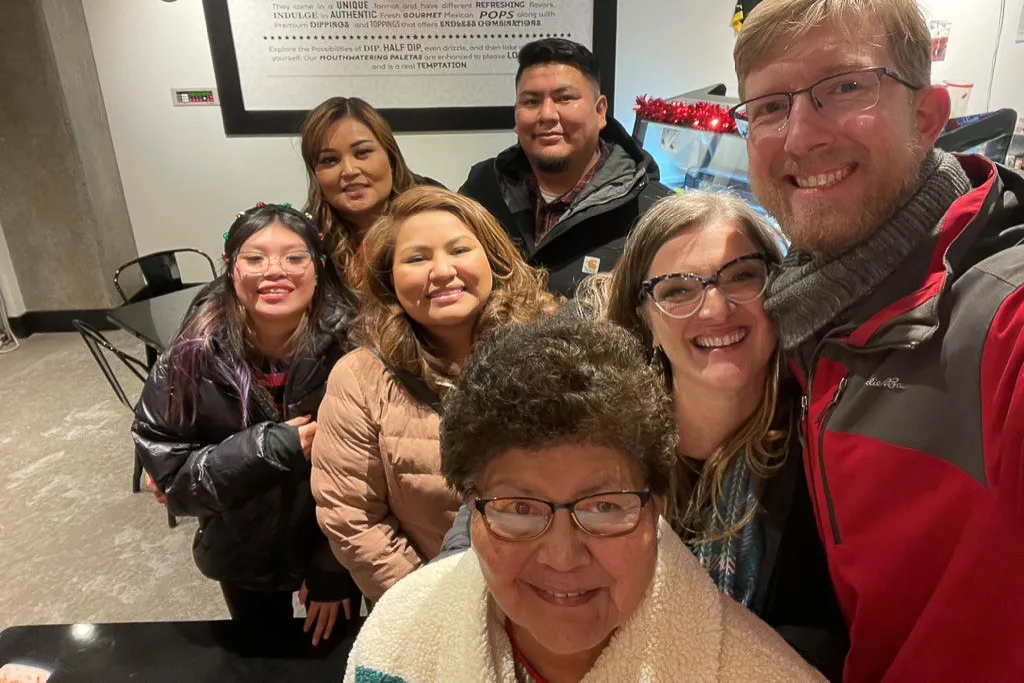
The Henrys themselves are a total package of church planting skills: He has a divinity degree; she has a master’s in Christian counseling. He has an undergraduate degree in music, and they are both skilled musicians. But these are not their roles.
“We don’t believe we are the ones to wear these hats in a Navajo church plant. Nor do we believe it would promote longevity and long-term Indigenous leadership if we tried,” DH says. “The Navajo need to see their people trained and leading in ministry.”
Instead, they are networking, recruiting, life coaching, and offering hospitality.
DH is ambitious.
“We are praying to raise a team … an Indigenous pastor who is qualified, not only to preach but to shepherd the souls of a congregation. An Indigenous deacon, someone passionate about involving and empowering the local church in mercy ministry and outreach among the Navajo. An Indigenous music director, someone willing to do the hard work of ethnomusicology in a culture that reserves the place of ethnic music exclusively to that of the traditional (animistic) religion; and finally, an Indigenous Christian counselor.”
As Anglo missionaries, DH and Emily have an unflinching understanding that they are working in a polluted relationship to the culture.

We are called to ‘love our neighbor.’ Natives are our oldest neighbors, and we haven’t loved them well.”
It’s heartbreaking. Embarrassing, DH says. “We are called to ‘love our neighbor.’ Natives are our oldest neighbors, and we haven’t loved them well.” The ministry road is hard and rocky and has to be sustained by prayer.
Emily nods. “We don’t get to take any credit, which is really nice. God gets the glory, and we stay humble.”
A Broken Road
As the gospel passes from culture to culture, new believers always grapple with what traditions to hold on to and what to let go of.
But what if nature worship is one of the few remaining links to their disappearing heritage? When sacred rituals and burial rites are the few cherished connections for a people still reeling from relocation and forced residential schooling?
How do you foster partnerships for the gospel with a complicated, often violent, and mostly mis-reached missionary history?
How do you honor a deeply-rooted cultural heritage without embracing the dangers of syncretism?
“Many Navajo are clinging tightly to their religious practices—desperately—because it is the only thing left of who they are as a people,” DH says.
Their traditional way of feeding the community is gone, he adds. Certain housing codes prevent traditional housing in many locations. Children were forced into boarding school; students were abused for speaking their first language.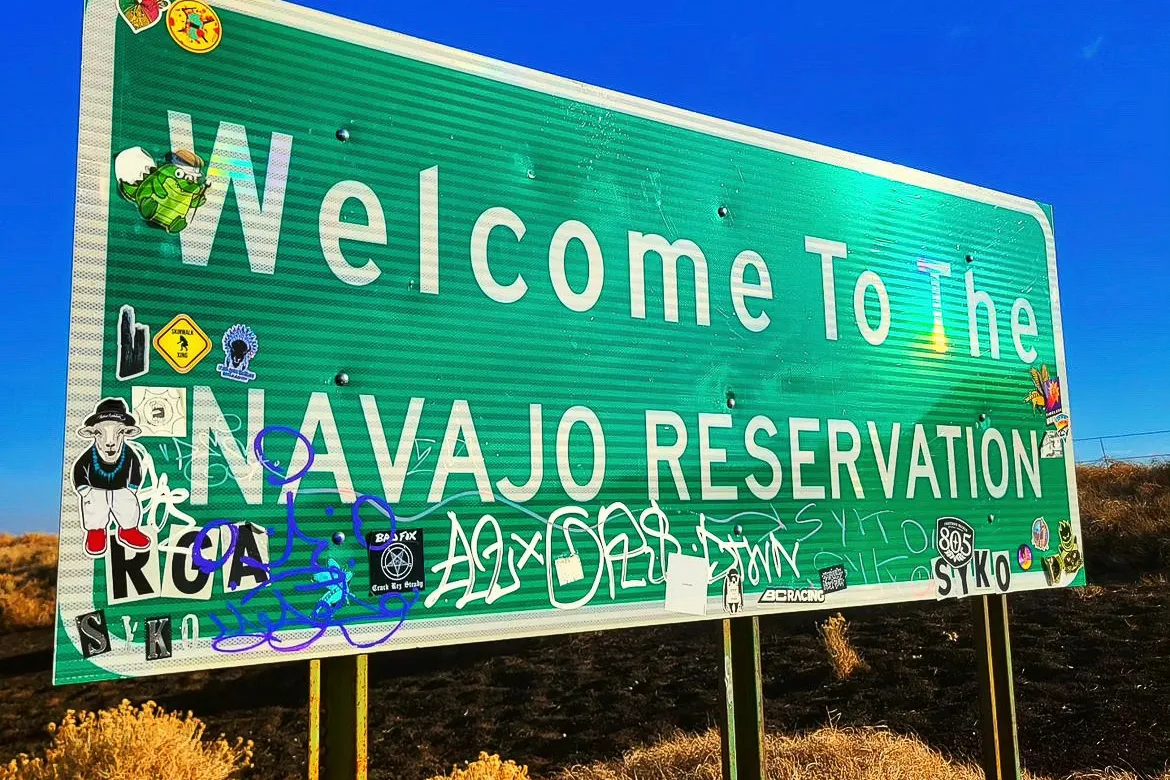
Working with Native groups is walking into a different culture but with a shared history.
In 1864, after years of frontier fighting, the federal government forced 10,000 Navajo from their traditional territory in what they call the Long Walk.
About one-third died of starvation and disease.

In 1864, after years of frontier fighting, the federal government forced 10,000 Navajo from their traditional territory in what they call the Long Walk. About one-third died of starvation and disease.
Four years later, they were allowed to return to land many of the Navajo consider sacred, bordered by four mountains that are markers of Navajo land and spiritual protection.
But then boarding schools opened in 1870, and children were forced to leave their families—a practice that would go on for almost 100 years.
A Way to Salvation
Mary Worker was one of those children.
The daughter and granddaughter of traditional Navajo medicine men, she is a mentor to the Henrys, modeling Navajo tradition and mature Christian faith. The government “entered my world” when she was a child, she says. Her grandmother hid her from government officials for about 10 years. When her grandmother died, Mary was taken to boarding school and assigned a church to attend. She spoke no English and was forbidden to speak Navajo.
When she was about 11 years old, that church sent Mary and one other native student to a youth retreat.
“I wasn’t looking for Jesus, but that is where Jesus led me and Jesus found me.”
Her father never challenged her new faith. “I don’t know why and we never discussed it,” she says. “But in our ceremonies when he passed the pouch of corn pollen (a sacred symbol for blessing and prayer), he would skip me and move to the next person.” In her prayers, she would talk to Christ.
Believing in Christ and His work has led to embracing nonnative people, she says. “The Navajo word for humans, people, means ‘five fingers.’ There is only one type of being. We teach our children to embrace mankind because God made all of us.”

The Navajo word for humans, people, means ‘five fingers.’ There is only one type of being. We teach our children to embrace mankind because God made all of us.”
DH says working with Mary and other Native Christians is watching Romans 1:11,12 come to life. “I long to see you so that I may impart to you some spiritual gift to make you strong—that is, that you and I may be mutually encouraged by each other’s faith.”
As they teach, they are also learning.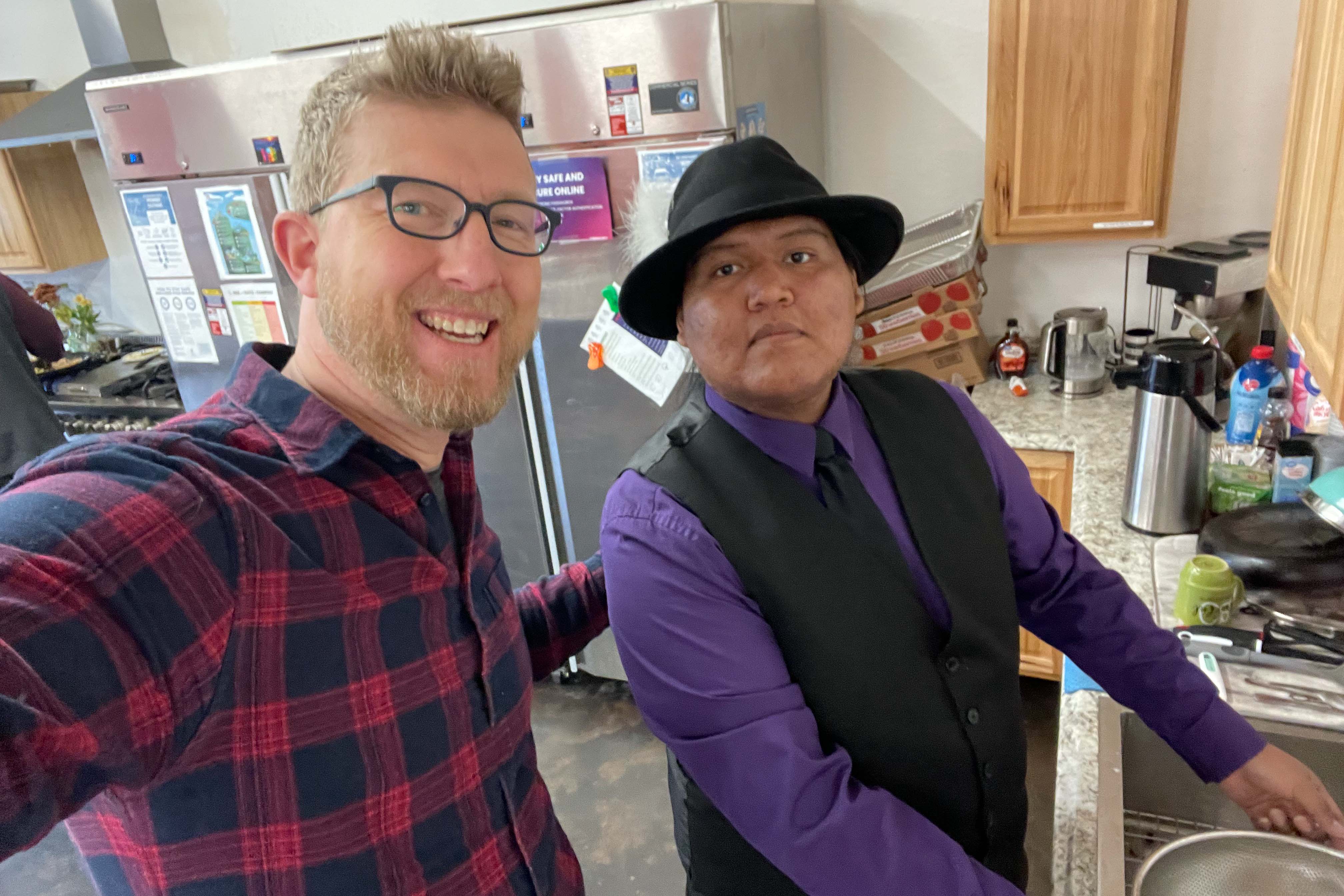
The Way of Christ
Mary met the Henrys when she was the church administrator at Church of the Resurrection in Flagstaff. Now she attends their Bible study, is their cultural mentor, and along the way adopted them into her family.
“DH is my son,” she says. “I have four daughters, and Emily fits right in. Their children are my grandchildren. And love has grown tremendously. … Humankind is weakening in faith, but there are saints among them.” She prays that the Henrys’ work will strengthen those.
Mary emphasizes the need for more resources to reach more people in the Navajo church. “We need them to guide the next generation so they will not be ignorant of the Word of God.”

The Henrys long to see a strong Navajo church walk tall in the way of Christ that brings healing to the world around it. And it has much to teach the Anglo church, DH says.
The Henrys long to see a strong Navajo church walk tall in the way of Christ that brings healing to the world around it.
And it has much to teach the Anglo church, DH says. 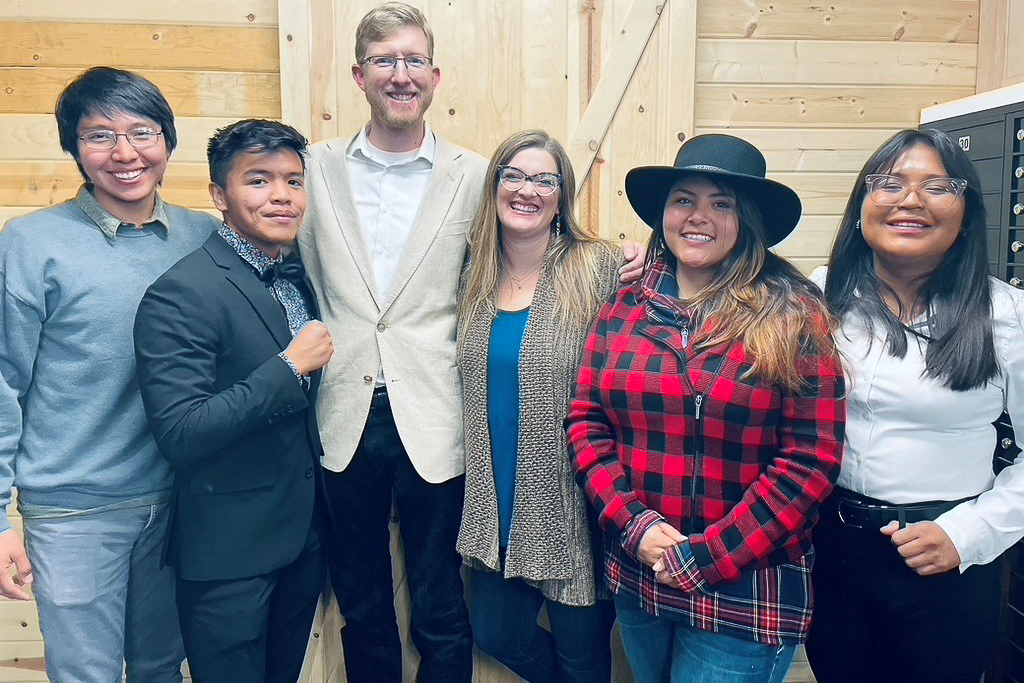
“My old boss was asked by a medicine man why he should give up his faith, which encompassed every part of his life, for a God that we worship for an hour or so one morning a week.”
“I’ve never forgotten that,” DH says. “They have a holistic faith in that all of life is worship, a sense that many of us in the Western world have lost.” More eternal than its history, statistics, and stereotype, “the Navajo bear the image of God in incredible ways.”
As the Navajo church grows and strengthens, it carries a testimony of resilience, grace, and unwavering faith. Navajo believers are showing what it means to worship with their whole lives—offering a powerful witness not just to their own people, but to the broader body of Christ.
Visit DH and Emily’s profile page to support their ministry.

